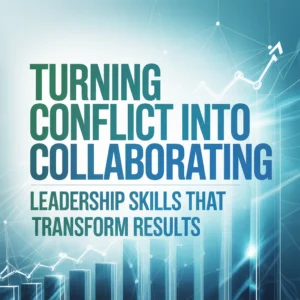What Does It Mean To Be “AIEO-Proof”?
In today’s whirlwind of advancements, “AI-Empowered Organisation” (AIEO) readiness isn’t about jumping at every tech fad. It’s about deliberately evolving your business so that AI supercharges your strategy, operations and outcomes—rather than leaving you behind.
But what actually makes a business “AIEO-Proof”? The term isn’t widely used—yet. At Leadership Services, we view an “AIEO-Proof” organisation as one that is:
- Proactive about AI adoption, not reactive
- Resistant to disruption, with adaptable processes and culture
- Powered by both technology and human judgement
- Ready for the ethical, legal and operational shifts AI brings
But, how do you really know if your company is there—or if it’s time to seek expert leadership to cross the chasm?
This article will help you self-assess, using a cluster of the most common questions we hear from clients, alongside insights from current thought leaders in AI and business transformation.
1. How Do I Know If My Business Needs “AIEO” Leadership?
Key Signs Your Business Is Falling Behind
AIEO-proofing starts with brutal honesty. If you answer “yes” to one or more of these, it’s a red flag:
a. Your digital strategy revolves around “automation” or “cost-cutting” only
If projects labelled as “AI” mostly automate rote work or reduce headcount, with little ambition for new products, services, or business models, you risk missing the boat.
b. Decision-making is centralised and risk-averse
AI-ready organisations empower teams to experiment with data and algorithms—within sensible guardrails. If all decisions need C-suite sign-off, AI-led innovation will stagnate.
c. There’s no clear owner of AI or data strategy
Without someone accountable for driving the company’s AI journey (often a Chief Data Officer, Fractional CIO, or AI-savvy board leader), transformation fizzles.
d. Data quality and access remain stubborn pain points
If historic data is patchy or business silos block access, your AI projects will deliver little value. Robust, well-managed data pipelines and shared data literacy are non-negotiables.
e. AI and ethics aren’t part of board-level or risk discussions
If your executive team can’t confidently debate algorithmic bias, data privacy or explainability, you’re running reputational and legal risks—however carefully you automate.
f. You’re overwhelmed by hype and vendor pitches
If every AI sales pitch sounds the same, and nobody can benchmark the genuine impact on your sector, you need an independent perspective before committing.
Leadership Services has published a more in-depth FAQ guide to this assessment for SMEs:
AI Uncertainty and the Need for Speed: Why SMEs are Embracing Fractional Executives
2. What Makes an Organisation “AI-Empowered” Versus Just “Tech-Enabled”?
The difference is mindset and integration.
- Tech-enabled firms buy tools and digitise processes, perhaps with isolated AI experiments.
- AI-empowered organisations embed AI into their strategy, culture, and customer journey end-to-end.
McKinsey & Company and other analysts say that AI-empowered businesses complete the following:
- Create a data-driven decision culture at all levels
- Invest in reskilling, not just hiring new talent
- Build a robust AI governance structure, addressing ethics and risk
A culture that asks: “How could AI create new value for our clients?” at every meeting—not just “How could AI save us money?”—is on the path to being AIEO-proof.

3. What Skills and Leadership Structures Are Needed?
When Do You Need A Fractional or Interim AI Leader?
Sometimes, you don’t need (or can’t justify) a full-time Chief AI Officer. But waiting until you hit a wall is dangerous. Consider an interim or part-time director if:
- Digital projects stall due to lack of vision or ownership
- Strategy wobbles between conservative and reckless
- The board lacks independent, technology-savvy challenge
- Sector peer benchmarks are a mystery
Leadership Services provides part-time digital leadership, ensuring rapid progress without full-time overheads. You can learn more about this model here:
Transformative Leadership on Tap: The Real-World Impact of Part-Time Directors
4. FAQs: Common Hurdles on the Journey to AIEO-Proofing Your Business
Q: “Isn’t AI too expensive or risky for SMEs?”
Absolutely not. Cloud-based AI and partnerships mean you don’t need a bottomless war chest. The main risk? Hesitation and inaction.
Q: “How soon should we bring in an expert?”
If you are struggling to articulate a use case, feel overwhelmed by the pace of change, or are playing catch-up on data quality, the time is now. Fractional and advisory leaders can scale up or down as you learn.
Q: “Will AI replace our people?”
For most businesses, AI augments human expertise. The companies that win are those who combine machine intelligence with the best of their culture and long-term knowledge.
Q: “Do we need a data warehouse to get started?”
Not always. Think outcomes, not infrastructure. Start with business priorities, not tech wish-lists.
5. The Five Key Signs You Need Expert Leadership for the AI Era
1. Vision Drift
You know “AI matters” but can’t connect it to your strategy, customers or markets.
2. Siloed Transformation
AI and digital projects are isolated from the rest of the business and senior leadership spends more time firefighting than steering.
3. Confused Accountability
Nobody can state who “owns” your data or digital roadmap, or everyone thinks it’s “not my job”.
4. Mismatched Talent
You’ve hired technical skills, but no one can bridge technology with commercial reality—and influence the boardroom.
5. Firefighting Over Innovation
You struggle to find time for proactive improvement and experimentation, so every AI project is “urgent” rather than strategic.
If these ring any bells, it’s time for external expertise—whether as a fractional CTO, advisory board member, or even a short-term project lead.

6. The Path to Becoming AIEO-Proof: Practical Steps
a. Honest assessment:
Commission an external IT and data audit, or use independent strategic advisors to benchmark your maturity.
b. Board engagement:
Train and upskill your board on AI’s risks, opportunities, and governance implications.
c. Pilot and scale:
Start with focused pilots in high-impact areas, measuring both business and customer outcomes.
d. Embed ethical frameworks:
Appoint champions for ethics and compliance, and stay ahead of regulatory trends.
e. Invest in blended leadership:
Mix internal knowledge with external experience. Consider part-time directors or interim leadership for specific transformation phases.
You can learn more about this AIEO-proofing journey in our feature:
Future-Proof Your Company: The Rise of Innovative, Value-Driven Interim Leadership

7. Further Reading, Stats & Resources
- YouTube: Explore “How To Lead in an AI World” by London Business School: https://www.youtube.com/watch?v=4hF8cGz1T3U
- External Reads:
- Ethics guidelines for trustworthy AI (European Commission)
- On the Leadership Services website:
- AI Uncertainty and the Need for Speed
- IT Audit Services
- Digital Transformation Consultancy
8. When to Act: Final Thoughts
The AI era rewards clarity, confidence, and collaboration—powered by leaders who can connect technology to the bigger picture. If you’re not sure where you stand, now’s the moment to ask honest questions, invite expert guidance, and make AIEO-proofing your competitive edge.
For a confidential discussion or to explore our fractional leadership and AI readiness services, find out more at leadership-services.co.uk.


